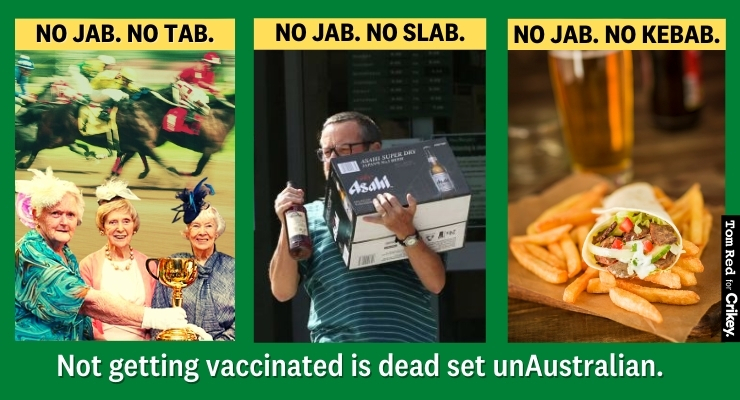
Paging through old newspapers, as your correspondent does incessantly, one is always struck by how differently we did things even a little while ago — the ability to illustrate any story with a pretty girl (this, for example, wouldn’t surprise: “Desley, 21, is pretty sharp, but she doesn’t like this Sharpeville massacre…”).
Another thing that catches the eye is a series of government advertisements for hospital chest X-rays for tuberculosis. These were not your government ads of today, all slogans and logos (“Staying apart keeps us together“), but simply a grid showing hospital locations and their catchment areas and hours open. Oh, and the bit at the top which noted that getting an X-ray was compulsory and rolls would be checked.
The governments of the day were determined to wipe out TB — correction: wipe out TB in non-Indigenous people, where it persists to this day — and so they just made ya do it. Like they made kids have the polio Sabin vaccine, sweet pink fluid on a tiny spoon. Lined up at school and just given it. There was a very occasional religious exemption, but that was it. Today the notes regarding anti-vax beliefs would knock out half the class.
Mass vaccination relied on three things. At the deepest level a sense of collective life, in which mutual obligation minimised notions of free-floating risk. That has now been atomised, so individual senses of risk separate from their actual likelihood. Second, a belief and trust in science as the frontier of human betterment; that the small number of people who were scientists and doctors were on the side of the masses, despite and because what they do was utterly incomprehensible to most. Finally, there was the regimentation of a mass society, in which lining up to do stuff — from kinder to school, to the Repco/Heinz/Ford factory — was just what most people did for most of their life.
Now a lethal pandemic has come and, in record time, vaccines to deal with it — and the society in which vaccines could be generally and universally circulated has collapsed underneath it. People are talking about some sort of government media campaign. (1. Nurse at empty mass vax centre, syringe in hand, “Where the bloody hell are you?”. No? OK, what about: 2. “Don’t kill him again” … cut to shot of Jesus on a cross made of two crossed enormous syringes. OK, OK. Back to the whiteboard.) But they’re talking about something along the lines of the anti-AIDS “grim reaper” campaign of the 1980s as a guide.
Well, the grim reaper TV ads were certainly effective, but mainly in causing a spike in violent homophobia. How much it actually did to promote safe sex, as opposed to the massive efforts of community mobilisation and appeals to plain common sense, is really unknown, no matter what the ad industry might claim.
But in any case, the notion that a grim reaper campaign would work today is fanciful. Such campaigns were the product of a mass society, but one at the end of its reign. Governments were finding resistance to the notion of the legitimate state and increasingly using a strategy we call “governmentality” — reaching into people’s selfhoods to shape their behaviour and, ultimately, the selfhood itself.
Now even that wouldn’t work, even if we had a prime minister and a government who weren’t focused entirely on media management. If 30% of people indicate they won’t take the vaccine, that goes way beyond the core of persistent anti-vaxxers.
Part of it may be an expression of the “free rider” problem — I’ll be protected if everyone else is, and avoid the small incidental risks — but I suspect it’s less calculated than that. This wider vaccine suspicion is fuelled by the more general atomisation of social life, in which families don’t feel they live in a society per se, but also by a subterranean spread of, if not suspicion, then alienation from science and abstract, invisible procedures that we are told are good for us.
In the great postwar progressive era, science was held to be on the side of humanity, its small priesthood serving us. Now science is tech; it’s the possession of a coming ruling class, and very much the master’s discourse.
Do you remember when we all just did what we were told to do? Let us know by writing to letters@crikey.com.au. Please include your full name to be considered for publication in Crikey’s Your Say section.








Crikey is committed to hosting lively discussions. Help us keep the conversation useful, interesting and welcoming. We aim to publish comments quickly in the interest of promoting robust conversation, but we’re a small team and we deploy filters to protect against legal risk. Occasionally your comment may be held up while we review, but we’re working as fast as we can to keep the conversation rolling.
The Crikey comment section is members-only content. Please subscribe to leave a comment.
The Crikey comment section is members-only content. Please login to leave a comment.